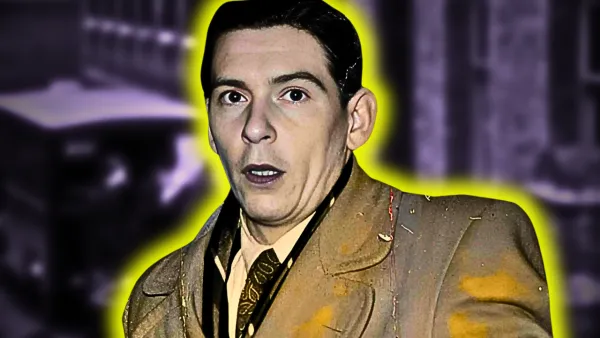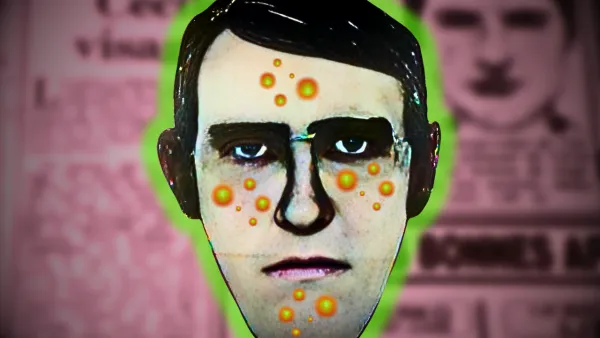The Infamous Belle Gunness Butchered Her Victims Limb From Limb And Then Disappeared

Belle’s Inferno
Joe Maxson knew how lucky he was to be alive, and had he not fixed that second bedroom window just two weeks before… well, he’d be a dead man right now.
Death came dangerously close in the wee hours of April 28, 1908, bringing along the fires of Hell with it. The flames burned through the old wooden farmhouse in mere seconds and brought the entire thing down like a house of cards. The rusty old nails did nothing to help hold up the structure; it collapsed moments after Joe had lept from the window, twisting his ankle the other direction.
SNAP!
Had Joe had passed out from smoke inhalation, or worse, slept through it, he’d be nothing but bone and ash, much like the kind widow whose home he was staying in. He had yelled and hollered for the others, but Miss Belle and her three small children remained inside, bathed in the inferno.
Joe grabbed a hatchet from the barn and ran back towards the front door of the house. Perhaps, he thought, he could at least save one. Maybe even the baby. The fire that consumed the Gunness farm was now relentlessly hot, giving Maxson no opportunity to reenter.
At this point, all he could do was to watch the fire burn.

A local newspaper described the charred remains of what appeared to be the mother and her children:
“The bodies of the mother and her children were piled up together, indicating that the mother had evidently made an effort to escape from the house with the children clinging to her.”
The journalist left out no gruesome detail when describing the smallest victim, the little boy:
“whose face was black, with a hole in the forehead from a falling brick. Its limbs below the knees had been burned away. The child’s mouth was open, silent testimony to the agony of death.”
Inconsistencies
The mother, Belle Gunness, was burnt to an “unrecognizable mass”; her bones protruding through her “naked flesh.”
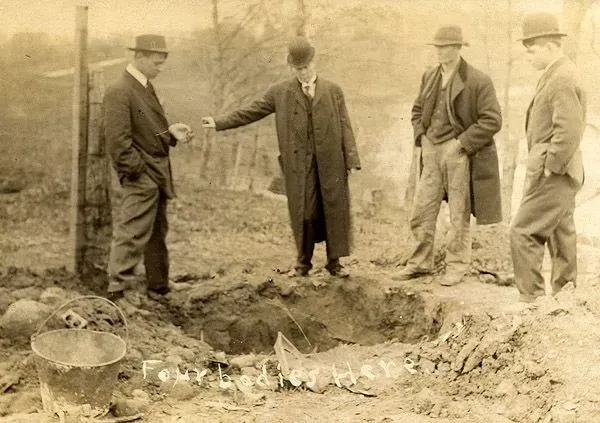
More disturbing was the absence of Belle’s head, which was most likely “decapitated by the ruthless and torturing flames.”
Diggers and on-lookers spent days sifting through the remaining rubbish, hoping to find the mother’s head, but to their dismay, it was never uncovered.
Not only was the mother’s head missing, but it appeared to searchers that the mother’s left arm was completely “burned off”, along with her right arm, which was burned off at the shoulder. In fact, Belle’s body, or what they initially believed was Belle’s body, was absent from both arms, and her lower portion was “burned off at the knee”.
Still, something didn’t sit well with those who searched. Perhaps a full investigation was in order.
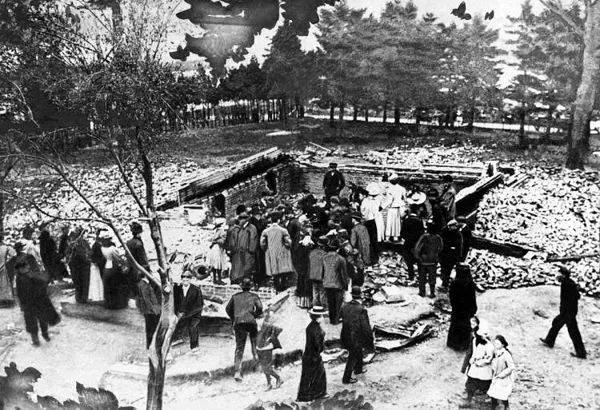
Prime Suspect
For several days before the fire, the farm widow Belle Gunness had been complaining to the La Porte Sheriff’s Office that a former farmhand and employee of hers, Ray Lamphere, had been stalking and threatening her and her children.
The worried mother claimed Lamphere became disgruntled over being fired weeks earlier and was most likely plotting to kill her and her kids. Thumbing through the reports, police noticed that Sheriff’s deputies arrested Lamphere on multiple occasions for trespassing on the Gunness farm.
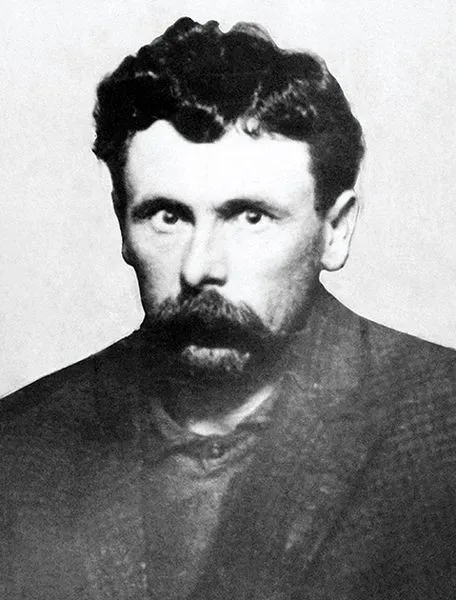
Lamphere had no other infractions other than his spat with the farm widow, and those who knew him claimed he would never do anything so heinous.
But could he really go through with it? The detectives pondered the scenario, but struggled to believe it, especially knowing even the thought of killing a baby would utterly repulse most men.
Heroine
Reporters swooned, and a narrative was created. The hardworking widow stalked by a disgruntled farmhand, fighting back in a desperate struggle for survival, a mother protecting her children at all cost, but succumbed to a man’s hatred in the end.
Belle’s sad story hit headlines hard and reporters kept digging for more information about her past.
Belle Gunness was not her actual name; it was Brynhild Paulsdatter Storset. The name is a literal translation of the daughter of Paul (her father). Brynhild was born on November 11, 1859, in the city of Selbu, Norway, to a poor sharecropper and his home-maker’s wife.
Brynhild was not an attractive woman by any means, and her large stature, weighing nearly 300 pounds, did little to attract a mate.
One acquaintance reminisces about Brynhild as an:
“unlovely young woman with a large head, small eyes, short nose, and a wide, fat-lipped mouth that, when set in a frown, bore resemblance to a frog’”
Brynhild didn’t immigrate to America until she was 22-years-old, first living in Chicago under the name ‘Bella Peterson’, before eventually adopting the name Bella. Her last name, would be from her second husband, Peter Gunness.
If the Shoes Fit
As local newspapers were trumpeting Belle Gunness as the farm widow who heroically attempted to save her children from the flames, detectives were uncovering something far more sinister.
While continuing the search for the heroine’s head, detectives discovered a macabre collection. Found in the ashes were at least a dozen of men’s shoes of all sizes.
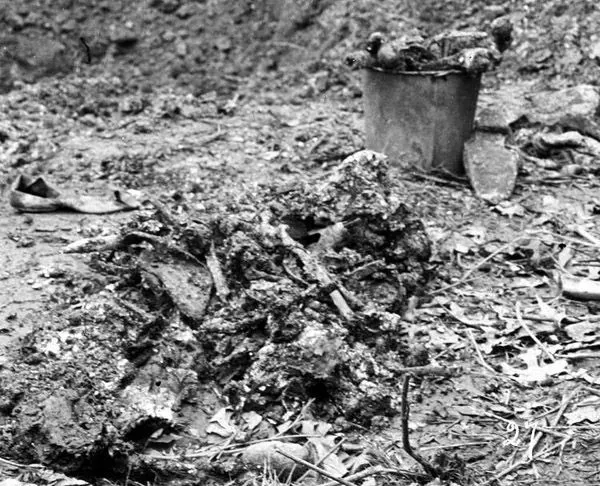
This fresh evidence presented detectives with a new theory.
Like Ray Lamphere, there were farmhands before him, and these men weren’t lucky enough to simply be fired by Gunness. Instead of paying the men for their honest work, detectives surmised, the widow simply killed them off. Perhaps she added poison to their food. A woman’s go-to weapon of choice, especially in 1908.
The theory was interesting, but where were the remains of the unlucky farmhands killed by the black widow?
Under the collection of shoes, searchers were in utter shock as they unearthed a “heap of human bones”.
Instantly, the widow’s status as heroic mother changed to that of a deplorable serial murderess, who not only ruthlessly killed her farmhands but her flesh and blood children as well.
Furthermore, Belle Gunness’s “house of horrors” had overthrown lurid stories of Jack the Ripper, a slayer of five women, with her body count far exceeding his own.
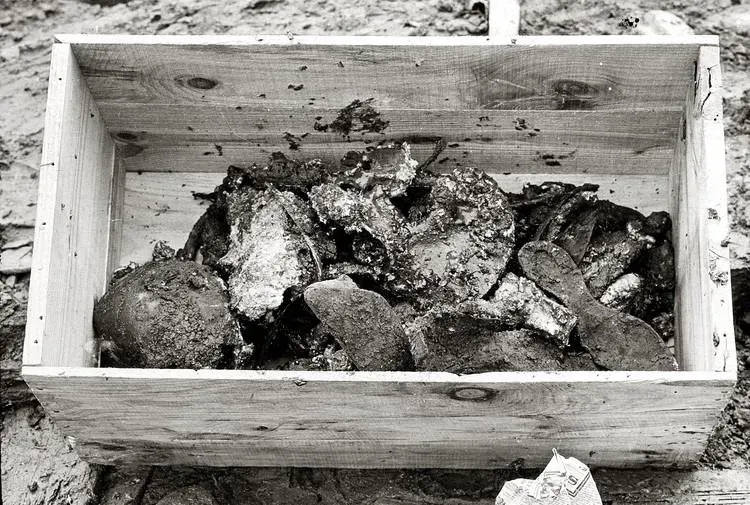
Searchers would unearth hundreds of human bones that belonged to at least 28 victims.
“About three feet down, rotting burlap, the remnants of the sack in which a torso had been stuffed, clung to the rib cage, pelvis, and spine. The skull, which bore a three-inch gash, lay nearby along with the sawed-off leg bones.”
Belle became the most notorious criminal and serial killer in modern times, and newspapers took every opportunity to sensationalize her story. Many monikers were given to Belle including: Lady Bluebeard, the La Porte Ghoul, Indiana Ogress, The Human Vampire, Female Bluebeard, High Priestess of Murder, Mistress of the Castle of Death, Queen of Crime, and the most notorious of all, Hell’s Princess.
So if the headless body found burned in the ash wasn’t Belle Gunness, only one questioned remains.
Where did she go?
The mystery remains still to this day.



